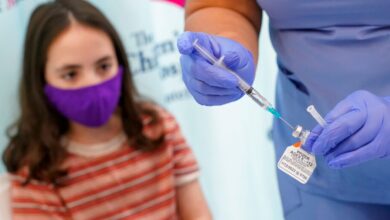Adults ages 50 to 69 most likely to report ‘long COVID,’ UK study finds

[ad_1]
An observational study out of the U.K. indicated that adults aged 50-69 reported so-called “long COVID,” or symptoms months after initial COVID-19 infection, at the highest rates compared to all other age groups.
Findings released Thursday from the Office for National Statistics drew from the Coronavirus Infection Survey, said to be the U.K.’s “largest regular survey of coronavirus (COVID-19) infections and antibodies,” informing its pandemic response.
The analysis stemmed from 26,000 participants who tested positive for COVID-19 and questioned whether they experienced any of 12 specified symptoms at weekly, and later, monthly intervals for up to one year. The set of symptoms included “fever, headache, muscle ache, weakness/tiredness, nausea/vomiting, abdominal pain, diarrhea, sore throat, cough, shortness of breath, loss of taste, and loss of smell,” per a release posted Thursday. Participants were then matched with a COVID-negative control to draw comparisons.
‘LONG COVID’ AFFECTS 1 IN 10 KIDS, ISRAEL SURVEY FINDS
Overall, from late April to August, 1 in 20 of some 12,611 participants reported any of the 12 symptoms at 12 to 16 weeks following infection, which was reported as “statistically significantly higher” compared to the control group.
A breakdown by age saw adults 50-69 reporting the highest rates of lasting symptoms, with 12.5% reporting symptoms 4-8 weeks post-infection, and 5.8% reporting symptoms 12-16 weeks after infection. By way of comparison, matched controls reported symptoms at rates of 3.8% and 3.1%, respectively.
Meanwhile, younger participants aged 2-11 and 12-16 saw the lowest reporting rates of symptoms at 12-16 weeks, at 3.2% and 3%, respectively. Parents reported symptoms on the child’s behalf. Additional results saw a slightly higher prevalence of long COVID reported among females compared to males (5.4% versus 4.5% respectively) at 12-16 weeks and among people with underlying medical conditions versus those without health conditions (7.4% versus 4.5%).
CLICK HERE TO GET THE FOX NEWS APP
The study had its limitations due its observational nature, reliance on self-reported data and low numbers of control participants still reporting symptoms in further analyses. (Another analysis attempted to assess “duration of continuous symptoms,” or potentially “stronger evidence” backing long COVID incidence, versus any symptom reported at any time post-infection, though data were missing for control participants by age.)
“Because of the observational nature of this analysis, it is not possible to say with certainty whether symptoms reported after a positive test for coronavirus were caused by COVID-19 or something else,” authors noted.
[ad_2]
Source link






